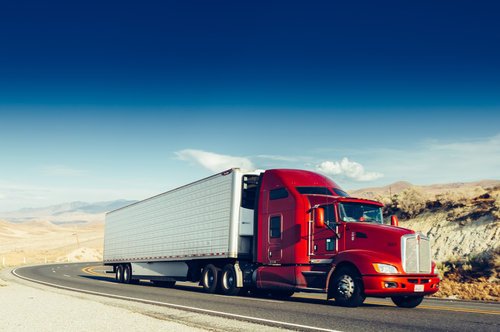
IMAGE: JIM ALLEN/FREIGHTWAVES
By Steve Hitchcock, COO of Duncan and Son Lines
I’ve read a couple of books recently that made me happy: “Factfulness” by Hans Rosling and “Enlightenment Now” by Steven Pinker. Each book flies in the face of the doom and gloom we see and read every day in our news and other media. They have their differences, but the central theme of both is the same: The world continues to get better, not worse. Both books talk about the world and how good things are based on every relevant measure: extreme poverty rates, health and life expectancy, education and literacy, and freedom and democracy.
Not only is it better, it is so much better. Pinker quotes famed American columnist Franklin Pierce Adams, stating, “Nothing is more responsible for the good old days than a bad memory.”
I had never thought about that before, but I think it’s true.
This got me thinking about trucking. I often hear our veteran drivers wish for the “good old days.” But I wonder if that’s a wish they really want to come true. Sure, they’d love to get rid of ELDs, restricted driving hours and speed limiters. Not everything about trucking is better, but most things are much better.
Does anyone really want to go back to twin stick transmissions? It was a nice jump going to a single stick and even better going to fully automatic.
How about the creature comforts? The sleepers are more spacious than ever. The OEMs have gotten more creative with that space too. The cabs are quieter than ever before. APUs are a great addition: running a TV, microwave, refrigerator, etc. Don’t forget satellite radio. Today’s trucks have air conditioners and heaters that actually cool and heat the cab. Remember when you didn’t have air ride?
Drivers don’t really care about fuel economy, do they? If they own their own truck, they definitely do. What if they are an employee driver? They should care just as much. Any efficiency gained by a company can be turned into a wage increase for the driver. But companies are greedy, right? Yep, they are. We’re greedy for drivers. They’re hard to find, hard to get and hard to keep. Pay is a major part of the driver acquisition and retention equation. Companies are going to pay as much as they can while still remaining price competitive in their marketplace. When I started at Duncan and Son Lines in 2011, we were averaging 5.5 mpg. That number is over 7.5 mpg today and continues to climb each year. Of course this is better for drivers, and it doesn’t even touch on the technologies that positively impact air quality and the environment as a whole.

Other technologies today allow drivers to get all of the information they need in complete and concise formats. Drivers don’t have to call dispatch with a roll of quarters from a pay phone anymore. They’re not folding and unfolding paper maps or looking through map books. They have navigation systems. They have street views of places they’ve never been and never seen before. They can use the internet to see the street view of the truck entrance, not just the address. They know where traffic and weather issues are at all times, not just through anecdotal CB talk.
How about safety? Safety systems such as front-end collision avoidance, lane departure warnings and adaptive cruise not only save lives, they save jobs. But that’s just speculation, right? The fact is, according to The National Highway Traffic Safety Administration, there were about 4,000 crashes involving a large truck or bus that included a fatality in 1975. In 2016 there were also about 4,000 of these same incidents. Things didn’t get better, right?
In 1975, there were 5.8 million large buses and trucks registered in the U.S. In 2016 that number climbed to 12.4 million, a 114 percent increase. Fatal crashes involving large trucks or buses per 100 million miles traveled by all motor vehicles on the road has fallen from 0.304 to 0.128. That’s close to a 60% percent drop. Again, not just better, but staggeringly better.
Pay has been the tougher one. It didn’t get better for a long time. Now the tide has turned. The industry has seen steep wage increases for a decade. My company, Duncan and Son Lines, has averaged 9-10 percent pay increases over the last eight years in the form of base mileage increases and additional accessorial pay. Today, drivers who were with us in 2011 make almost twice as much as they made then. Better yet, there’s no end in sight to rising driver wages.
When were the good old days for truck driving? They’re right now. We’re living them, and they’ll be even better tomorrow.









